A new book pays tribute to the exquisitely crafted headpieces of the Parisian jeweler.
French maison Chaumet established an aristocratic clientele after jeweler Marie-Etienne Nitot founded it in 1780. Known as Nitot & Fils at the time, it gained further prominence when it became royal jeweler to Empress Josephine. In a beautifully illustrated new book titled Chaumet Tiaras: Divine Jewels, authors Clare Phillips and Natasha Fraser-Cavassoni highlight the Paris jeweler’s close association with these gem-set symbols of power and prestige, which have graced the heads of royalty and the rich and famous for generations.
“Chaumet’s historic and sustained devotion to the tiara is a fascinating and important aspect of jewelry history,” says Phillips, a curator in the Sculpture, Metalwork, Ceramics & Glass Department at the Victoria and Albert Museum, London.
With over 200 illustrations, the book presents a selection of the distinctive tiaras the maison has crafted over nearly 250 years. It organizes them by themes reflecting their principal sources of inspiration, says Phillips: “Nature,” “Skies,” “Graphic Lines,” “Architecture” and “Power.” This arrangement made it possible to group together tiaras from different dates, including contemporary ones. The pieces in the book range from “a bandeau tiara of agate intaglios and pearls set in gold, circa 1810, and parts of the replica parure Nitot made around the same time as the diamond and ruby parure for [French] Empress Marie-Louise, circa 1811, to the 2019 collection Les Ciels de Chaumet, with its exquisite Etoiles Etoiles [the book’s cover image] and Soleil Glorieux,” Phillips notes. “In addition, the design sketches of pencil and gouache, many not previously published, are one of the great joys of the book.”
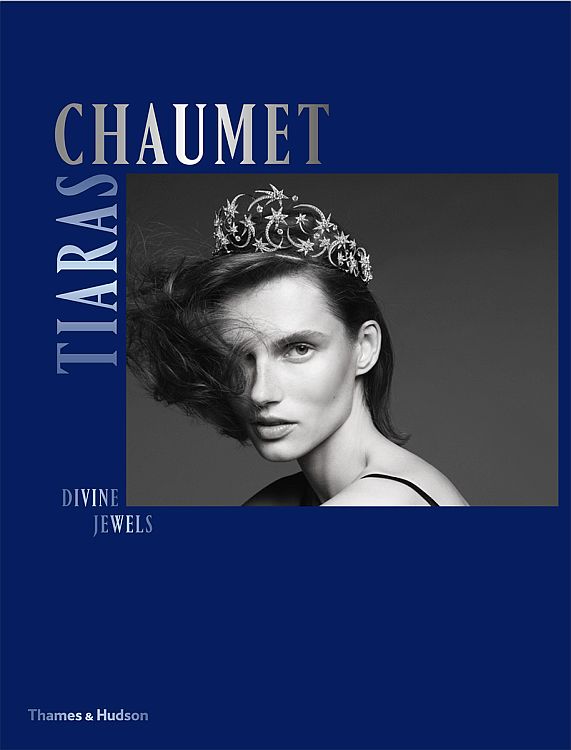
Style evolution
As with other fashionable accessories, tiaras echoed the jewelry trends of the era — be it neoclassicism or naturalism, the nostalgia of the romantic period, the imposing styles of the mid- to late 19th century, the delicate designs of Belle Époque, or the distinctiveness of Art Deco and Modern looks. As the craft excelled, so did the sophistication of the tiara.
What sets these glamorous headpieces apart from other hair ornaments, Phillips says, is “their completeness — the way they frame the face and encompass the head. Of all jewels, they have the most defining impact on a woman’s appearance. Their profile, with the central focus tapering to the sides, is immensely elegant, and they add height to the whole figure. A hair ornament might add interest to beautiful hair, but with a tiara…the style of the hair is secondary to the jewel.”
Chaumet has always made its tiaras from precious materials, she continues — “most typically diamonds, perhaps with the addition of a single color, such as rubies, sapphires, emeralds or pearls. As fashion dictated, [the company] added cameos and intaglios for a neoclassical look, or more unusual colored gems and enamel when naturalism was at its height. Until the advent of platinum, it was customary to set colored stones in gold, and diamonds in silver backed with gold.”
Phillips adds that “many of the most magical examples date from the turn of the last century, circa 1900. They are bold jewels…. Individual commissions might take specific themes, such as, notably, the waterfall tiara commissioned by Maria Pavlovna, grand duchess of Russia, in 1899, which was surely inspired by rare 18th-century waterfall jewels in the Russian imperial collection.”

Royal connections
Tiaras have historically symbolized both royal power and social status. One reason, Phillips explains, is that they are less formal than a crown, “yet still supremely regal. It’s worth remembering that although Josephine wears a tiara as she kneels before Napoleon in Jacques-Louis David’s painting Le Sacré de Napoléon, he is at the same time holding the crown — the actual symbol of royalty — above her head.”
In fact, the significance of the tiara as a fashion accessory can be traced back to Josephine in the early 19th century, according to Fraser-Cavassoni, a Paris-based writer, journalist and luxury expert. The empress was, she says, a “style icon, who made the tiara relevant.”
Noting a historic through-line, Fraser-Cavassoni points out that “Josephine’s daughter married into the Dutch royal family, and her granddaughter Josephine became the queen of Sweden. When Princess Victoria of Sweden got married in June 2010, she wore a tiara inherited from the Empress Josephine. It was the exquisite and elaborate Cameo tiara created by Nitot.”
In fact, Josephine was one of three French empresses who wore Chaumet tiaras, the author notes; the other two were Napoleon’s second wife, Marie-Louise, and Eugénie, wife of Napoleon III.
Tiaras have graced a variety of other notable wearers over the years, Fraser-Cavassoni continues. She cites the “dancing curls of Empress Eugénie; the nonchalance of Edwina, countess Mountbatten of Burma; the glamour of [20th-century American socialite] Barbara Hutton; the humor of Marilyn Monroe in Gentlemen Prefer Blondes; the stoic duty of Queen Elizabeth II with her glasses perched on her nose; the scariness of [actress] Sissy Spacek in Brian de Palma’s Carrie; the 1980s punk vibe of Gloria, princess of Thurn und Taxis.”
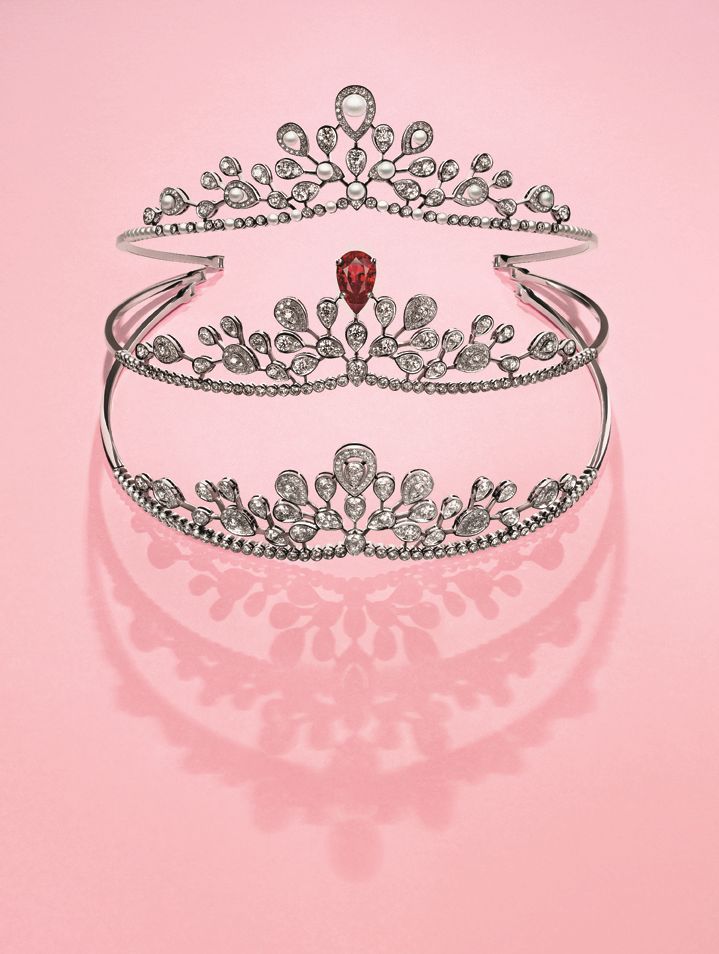
Fresh interest
Helping to reignite interest in the tiara is Duchess of Cambridge Kate Middleton, notes Fraser-Cavassoni. “She wears them magnificently, as do all the other young European royals.”
One reason for tiaras’ modern appeal, the author says, is that Chaumet’s new tiaras are transformable, “allowing them to be adapted to the client’s lifestyle. For instance, a tiara bought for a special occasion like a wedding can then be broken up and worn as a necklace, a pair of bracelets or a brooch.”
The company’s rich archive of these headpieces, adds Phillips, “brilliantly documents its history and provides new inspiration for the future.”
AUTHOR’S PICKS
What do you feel are the most iconic Chaumet tiaras in your new book?
Clare Phillips
■ The Leuchtenberg tiara of 1830-40, with diamonds and emeralds, comes apart into separate brooches. Few tiaras survive from this early due to the constant changes in fashion, which usually resulted in jewelry being refashioned every few generations.
■ The Sun tiara, first made by Chaumet in 1906 and made famous by Princess Irina Yusupova in photographs around the time of her wedding in 1914.
■ The Fleuron motif tiara made for Edwina, countess Mountbatten of Burma, 1934. Stunning and substantial, it was made famous in her society portraits, as she was the last vicereine of India and a fascinating and admired figure.
■ The Vertiges tiara, 2017, by Scott Armstrong, with a brilliant contemporary design inspired by the classical geometry of a French formal garden. The result of a competition for jewelry students at London’s Central Saint Martins, it was like a dream come true for Armstrong, who had his design made up in the Chaumet workshops in Paris and now works for the maison.

Natasha Fraser-Cavassoni
■ In Chaumet’s ad campaign, Stella Tennant, a top model and granddaughter of the duchess of Devonshire, wore the Bourbon-Parma tiara that Joseph Chaumet designed in 1919.
■ During the Roaring ’20s and the moment of flapper girls, Chaumet clients such as Alice Grosvenor Guest, Lady Wimborne, and Charlotte, grand duchess of Luxembourg, ordered flat diamond bandeaus. The grand duchess had a massive cabochon emerald in the middle of hers.
■ International heiress Mrs. Payne Whitney, née Gertrude Vanderbilt, purchased Chaumet’s Wings Aigrette tiara, which could be broken up and worn separately as two brooches.
■ Princess Isabelle of Orléans-Braganza wore the Curvilinear tiara. Years later, in 2015, Chinese star Angelababy wore it for her wedding.
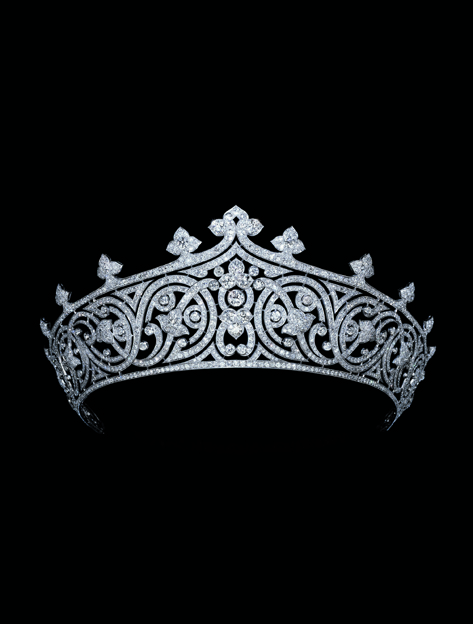
Main image: Firmament Apollinien tiara in white gold set with diamonds and sapphires from La Nature de Chaumet collection, 2016. Image: Chaumet.

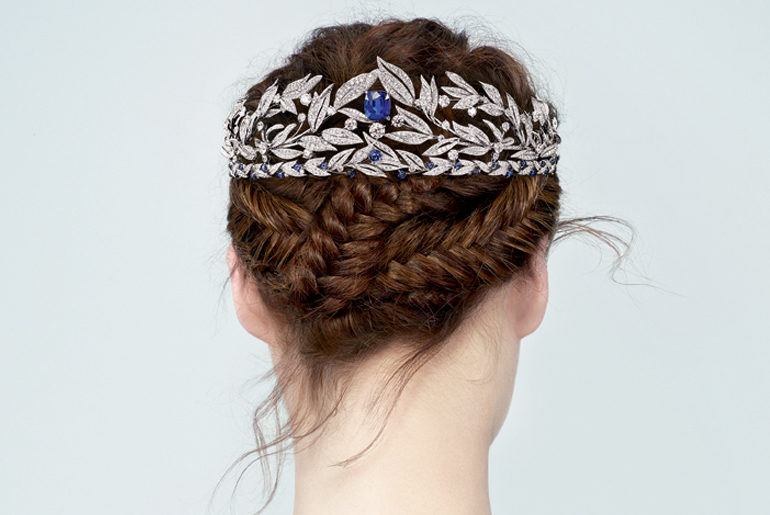
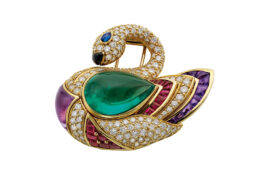
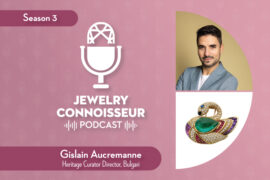
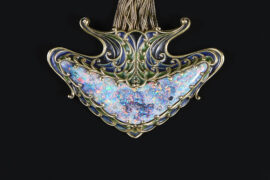
Comments are closed.